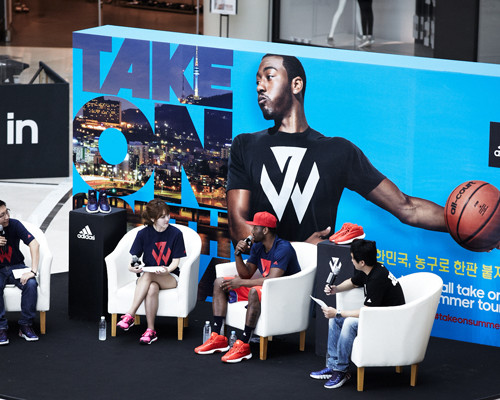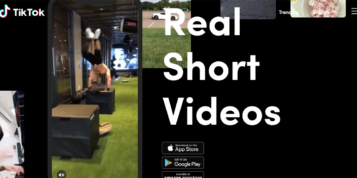Since the birth of social media, customers want to be talked to more like people, to be engaged with rather than sold to. Savvy brands use two-way conversations to learn about their customers, engage with them, grab their attention and personalise their online experience. The result is very personable and natural interactions, not dissimilar to those had with a friend!
So what does this mean for brands and marketers?
The new social landscape has created a backdrop to everything a brand does and a plethora of external factors to consider: opportunities, influences, as well as dangers. Real-time interactions and the speed at which a brand reacts can bring huge rewards, but also deep pit-falls. So what is the practicality for brands when it comes to planning and managing social scenarios?
Speed versus Impact
The two main decisions a brand needs to consider in a social arena are the speed at which we react, and the potential impact of any reaction. The main scenarios are as follows:
- Minor v Instant
- Major v Instant
- Major v Planned
- Medium v On-going
Let’s use the recent World Cup as an example and categorise as a ‘Major v Instant’ decision.
Should ‘marshals’ apply a brand muzzle?
Adidas invested heavily in World Cup sponsorship, being an official sponsor of both the event itself and Luis Suarez. I imagine the brand would have been keen to secure a good return on investment. Perhaps the brand was also expecting to make headlines with Uruguay’s star player. He did make headlines, but not for the right reasons. Found guilty of biting another player in the match against Italy (and not for the first time), a debate quickly started around how brands should deal with such an incident.
For many, it presented an opportunity to react quickly through social media and participate in the discussion. For Adidas, the incident presented a very real threat to brand integrity and it was paramount to decide whether to join the myriad of other brands making light of the situation, to ignore it altogether and hope it died down, or to publicly express its disapproval of his behaviour. To misjudge the sentiments of its customer base could cause long term damage to the brand. It is reported that in the immediate aftermath that Adidas seriously considered terminating its sponsorship of Suarez.
To decide which stance to take, Adidas needed to listen to the social conversation and work out the best course of action. Was the general consensus that the Suarez incident was something to laugh at? Was there divided opinion? Did Europeans think the same as South Americans? Did opinions differ between age groups? In short, the brand team at Adidas had a big decision on their hands. In the end, Adidas chose to remain silent and said nothing on the matter. Was this the right decision for the brand or should it have stuck its neck out and tackled the issue head on?
Why didn’t Adidas respond?
Adidas avoided commenting on the matter on Facebook or Twitter during the tournament. Even when there was a surge in tweets mentioning @adidas in the days following the incident, (particularly due to the negative adverts on the beaches of Rio de Janeiro depicting Suarez bearing his teeth), Adidas kept its silent pledge. Gorkana’s social media monitoring tool, Social Media Pro, revealed that between the start of the World Cup on Thursday 12th June and Friday 27th June (the bite took place on 24th June), ‘likes’ on Adidas’ Facebook page peaked on 26 June. This suggests that the incident and the brand’s decision to avoid comment caused no lasting or damaging impact.
A Gorkana survey of 2,000 consumers reveals that, pre-World Cup, a slightly higher percentage of people believed Nike was an official sponsor. However, by the end of the tournament this had switched, with more people correctly identifying Adidas as an official sponsor.
Another survey conducted using Gorkana Surveys in the days following the Suarez incident, reveals that more than a third (36%) of consumers actually changed the way they perceived brands associated with the player. An alarming 40% said they would be less likely to buy products or services from brands who continued to associate with, or sponsor, Suarez.
Considered decisions
With all the worldwide media attention surrounding the Suarez bite, sponsors associated with the player were put under the spotlight. Adidas, in particular, was scrutinised; this was intensified due to the unfortunate ads that were seen on the beaches in Rio de Janeiro – people were looking to see how Adidas would react. So for Adidas, adopting humour as a response to the situation was not a good move. Some felt that as a sponsor of the player, Adidas was in some way accountable for his actions and should therefore speak out to condemn his behaviour. Did the number of people calling for a response merit a reaction? And what sort of response would reflect and represent its target audience?
So whilst the decision to not get involved in social conversations at all didn’t have a negative impact on the brand, it was perhaps a missed opportunity for Adidas. In the ongoing brand war with Nike, it could have been a good time to speak up and be heard and could have even spelt a victory to their rival.
So when presented with this sort of situation in the future, brands could consider these options:
Don’t react; insight either shows that your audience doesn’t care or is evenly split in opinion that a reaction would isolate a large proportion of your customer base.
React, but don’t follow the lead; find an alternative emotion to humour to cut through the noise and desperation of other brands all making the same joke.
React, with purpose; if you have evidence that the majority of your customers share an opinion, for example that Suarez should be dropped by his sponsors, why not lead the way by making bold statements about professionalism and fair play in sport.
It takes guts to say something that stands out
When brands are challenged with ‘major v instant’ decisions, such as the one Suarez presented Adidas, it takes guts to say something different. It’s difficult to say whether Adidas was right or wrong for steering clear of open debate and not speaking out at all. Only the Adidas team know why they decided to stand by Suarez and what made them come to this decision.
Personally, as a consumer I would be inspired by a brand that said something different and meaningful. A brand unafraid to stick its neck out and make bold statements, different to those of the masses. Surely the World Cup offered the perfect stage to really shine…






